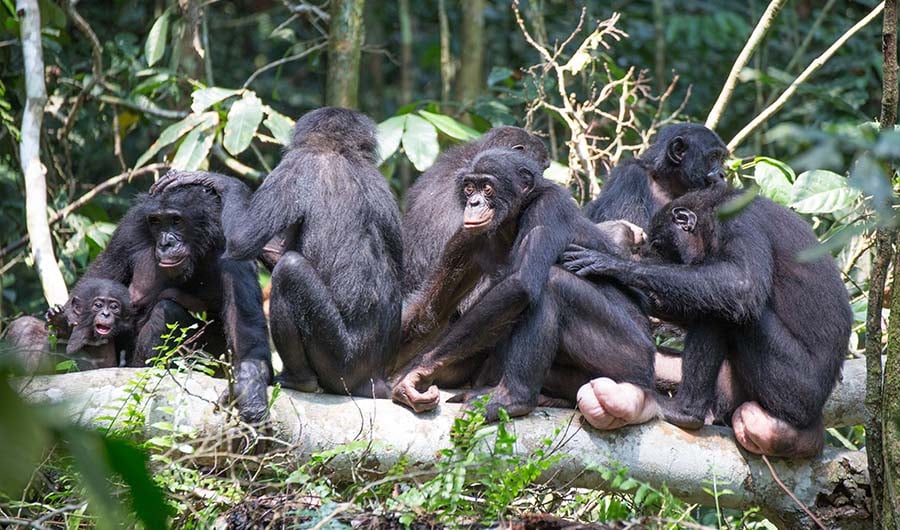From a study done in the Luo Scientific Reserve, experts find many dissimilarities between chimpanzees and bonobos. Each society has adapted to form distinctive differences in many aspects, from their leaders to their mating rituals.
The difference between chimpanzees and bonobos lies in the gender-based dominance in their societies. While chimpanzees are patriarchal, the elder female bonobos hold the highest rank making their society mainly matriarchal.
The Female-Dominated Bonobos
While bonobos and chimpanzees are similar because of their species, they vastly differ in many aspects of social behavior to adapt to different circumstances; this is the result of separating themselves in other neighborhoods when they moved to Central Africa two million years ago.
Male chimps share intense social connections, and female chimps are seen as inferior, seldom having the chance to make decisions in the society of chimpanzees. Additionally, male chimps often show aggressiveness by attacking the adults and babies of their kin, sometimes forming alliances to do so.
Though chimpanzees are male-dominated and show signs of frequent aggression, the bonobo society proves to be different. Peace is maintained, and conflicts that arise hardly lead to fatality. Female bonobos socialize with each other frequently, eating together and grooming each other. Bonobos also provide themselves with sexual pleasure by rubbing their genitals against each other.
There are also notable gender-based differences in dominance in the bonobo society. Low-ranking bonobos have neither the male nor the female as dominant, while the dominating role of female bonobos is more abundant in the higher ranks.
The oldest female bonobos hold the highest position of authority in most bonobo societies. An elderly female bonobo will usually claim the captured prey of a bonobo to ensure food sharing with the others. (Source: Inside Science)
Protection Against the Males
The sexual harassment of male bonobos to female bonobos is one of the few instances where bonobo societies display aggression. The females around the victimized bonobo will collectively attack the male, and soon the male runs away.
When female bonobos begin to immerse themselves in new groups, they immediately bond with older female bonobos to ensure protection. Conversely, female chimpanzees usually do not have a choice to consent to whom they copulate. (Source: Inside Science)
The Root of Their Difference
Researchers theorize that the main reason why bonobo and chimpanzee societies are different in terms of gender-based dominance is because of the unapparent fertility of the female bonobos.
Chimpanzees’ fertility only occurs once every few years. Male chimpanzees needed to fight to mate with the rare willing female chimpanzees, which consequentially caused male chimpanzees to develop large and powerful bodies with assertive personalities. Their adaptation slowly converted the chimpanzee society into a patriarchy.
Contrariwise, female bonobos are willing to mate whether they are infertile or not, and there is a prevalence in female sex partners. These factors contribute to the behavior of the male bonobos, where they aren’t forced to use violence for mating purposes. Adding to that, this also gives way for female leadership in their society.
Female leadership in the bonobo society is respected among the bonobos. In group movements, the oldest female bonobo had more authority over the others than any other bonobo, and most of the group movements were initiated by elderly female bonobos. The bonobo society benefits much from their leadership as they have the most knowledge on food. (Source: Inside Science)
